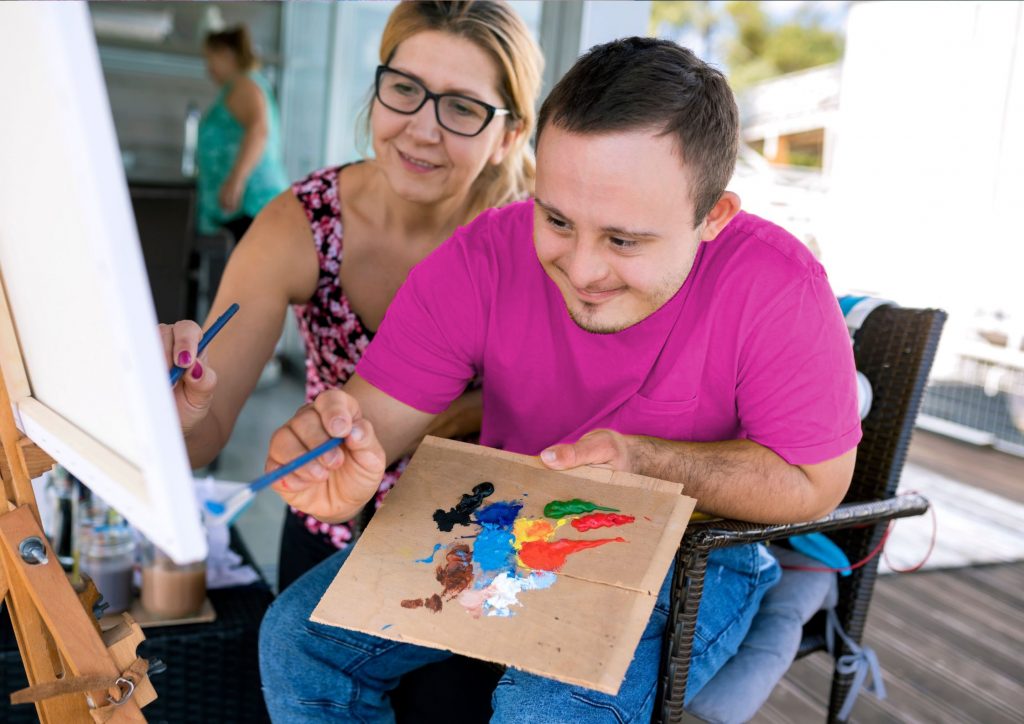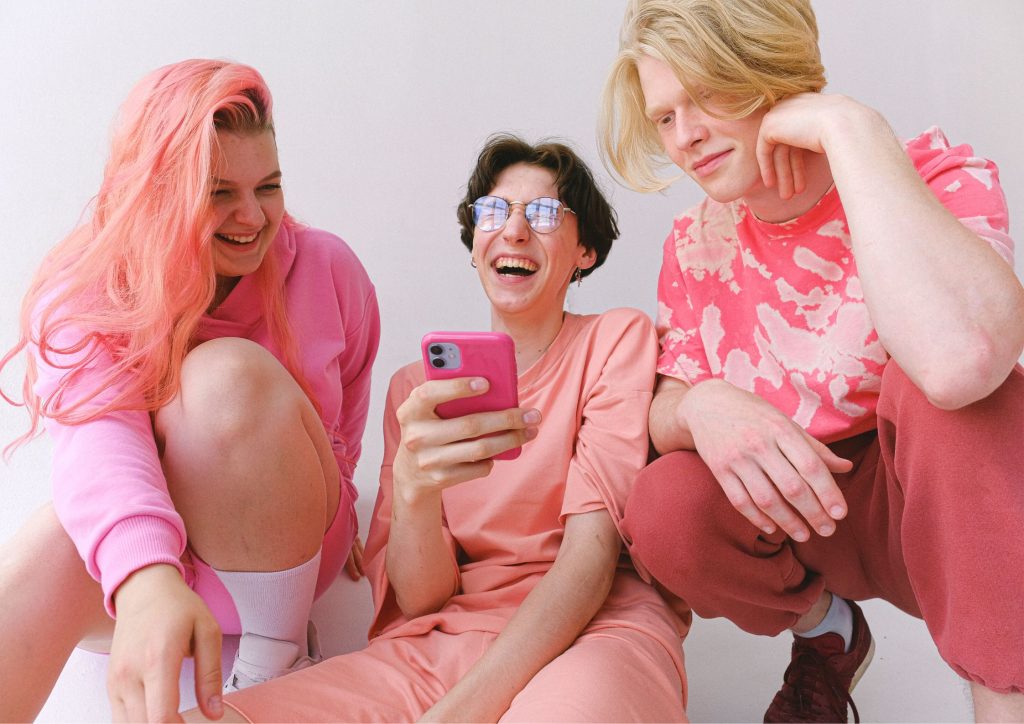What You Need to Know About Invisible Disabilities
“Everyone you meet is fighting an invisible battle you know nothing about. Be kind always.”
When people think of the word ‘disability’ many will picture a wheelchair, walker or guide dog, as this is what is commonly portrayed in the media. The reality is that 90% of Australians who have a disability actually live with an invisible disability.
International Day of People with Disabilities is an annual reminder and continuous advocate supporting people living with disabilities and their families worldwide whilst providing ongoing education and promoting an inclusive society. Here at Nurse Next Door we want to continue promoting inclusivity and Possibility regardless of someone’s age or ability.
The below guide is here to help you learn more about invisible disabilities, why inclusivity and representation matter as well as how you can support people living with a hidden disability.
What Is a Visible Disability?
A visible disability usually presents itself in a physical form that is easily noticeable based on a person’s appearance, movements or facial expressions. In some instances, they may require the assistance of devices such as a wheelchair.
Common examples of visible disabilities can be both intellectual and physical disabilities and may include:
- Down Syndrome
- Fetal Alcohol Syndrome
- Amputations
- Paralysis
- Cerebral Palsy
- Muscular Dystrophy (MD)
- Multiple Sclerosis (MS)

What Is an Invisible Disability?
Invisible Disabilities® Association defines invisible disabilities as any physical, mental or neurological condition that is not visible from the outside but can still limit or challenge a person’s movements, senses, or activities.
‘An invisible disability is any long-term impairment, any chronic medical conditions or illnesses that aren’t immediately visible in most everyday circumstances,’ says Stephanie Mantilla, who is working towards her PhD on invisible disabilities at the University’s Centre for Disability Research and Policy
An invisible disability can include symptoms such as:
- Debilitating or chronic pain
- Chronic Fatigue Syndrome
- Dizziness
- Cognitive dysfunction
- Intellectual impairment
- Brain injuries
- Learning disabilities
- Mental health disorders
- Visual or auditory disabilities
- Problems in social or emotional development
Invisible disabilities can sometimes, or always, limit an individual’s daily activities. These can range from mild challenges to severe limitations, and vary from person to person.
It is also possible for someone with a visible disability to also have an invisible disability.
The Difference Between Visible & Invisible Disabilities
Developmental disabilities can either be visible or invisible and apart from their obvious definitions and examples, as discussed above, some other differences between these two types include:
- Varying treatment plans
- Different impacts on a person’s daily living
- How a person is treated by society
Invisible Disabilities Are More Common Than You Think
As previously mentioned, 90% of Australians who live with a disability are actually living with an invisible disability.
Just because someone has a disability, does not mean that they cannot carve out successful careers in their chosen field.
Many famous people living with invisible disabilities continue to raise awareness of their condition, and some modern-day celebrities include:
- Selena Gomez has Lupus
- Venus Williams has Sjogren’s Syndrome
- Little Wayne has Epilepsy
- Morgan Freeman has Fibromyalgia
- Bella Hadid has Chronic Lyme Disease
- Halle Berry has Diabetes

Why Accessibility & Inclusion Matters
Unfortunately in some cases, people with invisible disabilities are accused of imagining their symptoms – “but you don’t look sick” or “you don’t look like you have a disability” are common phrases people with invisible disabilities hear when they disclose their disability to an onlooker.
Using accessible parking spaces, toilets and other amenities is another topic of debate against people who live with invisible disabilities even though many people with invisible disabilities still require the use of accessible amenities. For example, if an individual is suffering from chronic pain or fibromyalgia and struggles to walk 50 meters without rest, they still need to use an accessible parking space.
There is still a lot of misunderstanding within the community about invisible disabilities which is why education, acceptance and learning to promote inclusivity for people with invisible disabilities is important.
How to Support People With Invisible Disabilities
Being mindful, inclusive and respectful toward people who experience an invisible disability can be a challenge because you might not know who is and who isn’t living with an invisible disability but, there are some things everyone can do to promote inclusivity:
Don’t judge people who disclose their invisible disability
Some people with invisible disabilities have felt stigmatised after disclosing their disability or have been dismissed as overreacting to their symptoms.
- “But you don’t look sick!”
- “It could be worse.”
- “Have you tried yoga/cutting out gluten/taking herbal remedies?”
- “I know how you feel.”
- “You’re so brave.”
Instead of the above phrases which many people with invisible disabilities hear, you could say:
- “What can I do to support you?”
- “What helps you feel better?”
- “You’re not alone; I’m here if you want to talk.”
- Nothing – sometimes it just helps to listen.

Accept that different people need accessible amenities
People with invisible disabilities have been known to experience judgement and even verbal abuse for using accessible parking spaces and other amenities they’re entitled to use because onlookers have simply assumed that they don’t have a disability.
People with invisible disabilities can still experience physical and cognitive limitations which require the use of accessible amenities. If someone who doesn’t ‘look’ disabled is using accessible amenities, it is important not to make any assumptions or hold personal biases against that person because you never know what someone might be going through.
Broaden your understanding of hidden disabilities
Inclusivity starts with education, understanding and acceptance. Building your personal awareness around invisible disabilities is the first step you can take to better broaden your understanding and promote inclusivity.
Here are some helpful links to help you start gaining better understanding some of the hidden disabilities people around the world will experience:
- Autism
- Crohn’s & colitis
- Endometriosis
- Epilepsy
- Fibromyalgia
- Lupus
- Myalgic encephalomyelitis/chronic fatigue syndrome
As you learn more about these and other invisible disabilities ask yourself “how might physical or social barriers restrict someone with the invisible disability I’m learning about?”
Challenging your thinking, bias and assumptions which you might consciously or unconsciously hold against people with invisible disabilities will help lead you to become a more inclusive member of society.
Avoid benchmarking people using unrealistic standards
People living with invisible disabilities have felt the pressure of trying to fit in with unrealistic standards their whole lives, like knowing how to interpret the vague language or holding the ‘right’ amount of eye contact.
People with Autism often find eye contact uncomfortable and might avoid it but as a result. As a result, a person with Autism may feel disadvantaged in a job interview because they’re not acting ‘appropriate’ or appearing ‘confident enough’; a judgement made by the interviewer who uses the neurotypical as a normative benchmark for interview success
Different types of neurodiversity can stem from some hidden disabilities and will affect a person’s behaviour in varying ways including:
- How they interact in social settings
- How they perform tasks in professional settings
- How sensitive they are to noise
- How do they interpret communication styles
Thanks to extensive research scientists have discovered a broad spectrum of neurodiversity in society and benchmarking everyone through neurotypical standards is not only outdated but also excludes anyone living with a disability.
Believe someone when they tell you about their pain
Having a disability that is not visible often invites a lot of scepticism and judgement from the general population. Sometimes people don’t believe someone when they disclose their invisible disability or the hidden symptoms.
People with invisible disabilities and illnesses face a different stigma compared to those with visible disabilities. They feel underserved by others who don’t realise that they have an invisible disability and aren’t treated as seriously as someone with a visible disability would.
If someone tells you about their pain, the most inclusive thing anyone can do is to believe them. It’s important to acknowledge that person’s pain and check in to see if there is anything that they need from you.
Regardless of the disability, whether it’s physical or mental impairment, a visible or invisible disability, it is important that we continue to promote inclusion within society and keep challenging the stigma and status quo around all types of disabilities.
Nurse Next Door Home Care Services believes in the power of positivity, possibility, purpose and the right to live independently in your own home, on your own terms regardless of your age or ability.

At Nurse Next Door, we are celebrating ageing and are passionate about Making Lives Better.
To learn more about The Power of Happier Ageing you can download our report
or contact us today on 1300 600 247 to discuss how Nurse Next Door can help you keep doing what you love.
